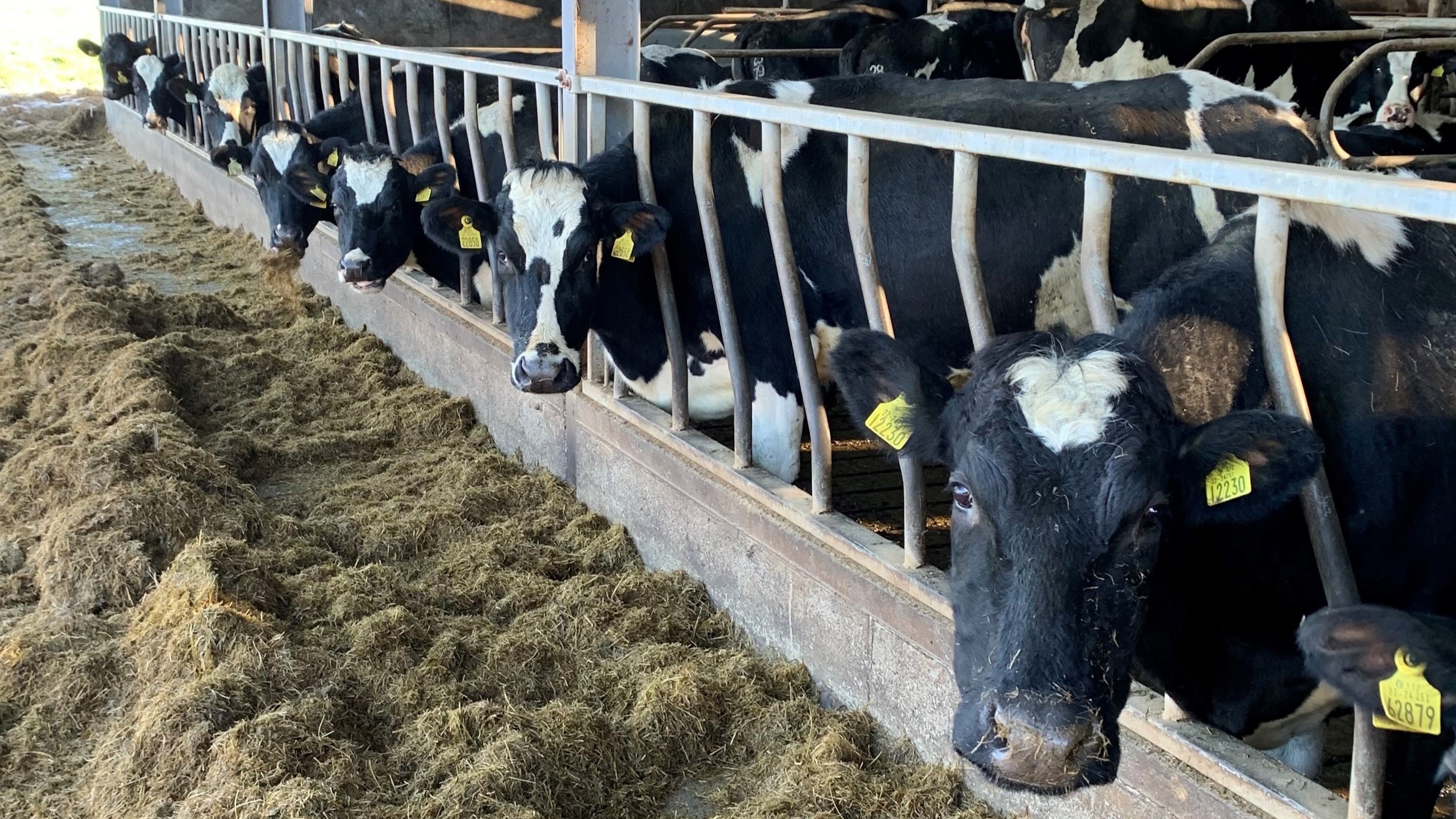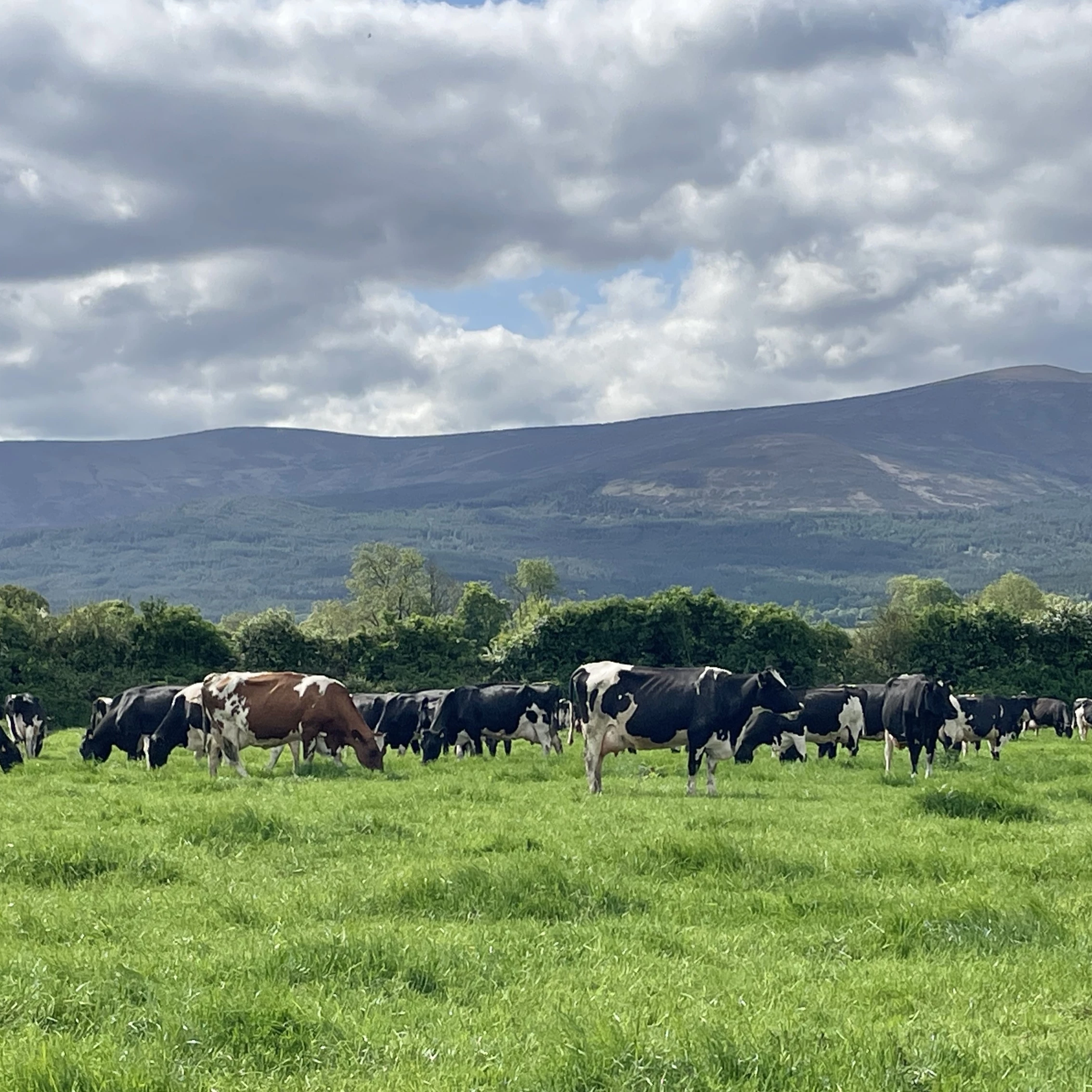By Karen Wright
In 2016 dairy producer Conor O’Sullivan introduced Norwegian Red genetics into his Holstien herd of 200 cow and 70 followers. Of the 38 heifers born in 2017, 22 are still in the herd and in calf, and going into their sixth lactation. Of the 39 Norwegian Red crossbred heifers born in 2018, 25 are still in the herd and in calf.
This, in itself, tells a story, where the introduction of genetics, noted for their high fertility and balanced health and production traits, have been successfully integrated to boost overall production and future-proof the performance of the herd.

“I didn’t want to compromise yields,” says Conor, who runs the spring calving cows on a 53-hectare grazing platform and dairy youngstock – 35 in each year group – on a block of 28 hectares of grassland, 20 hectares of which are used for three cuts of silage a year.
The herd is now averaging 5,950kg of milk at 4.2% fat and 3.4% protein, and these yields have remained unchanged since progressing from only Holstein to a mainly crossbred herd - only a few older purebred Holsteins remain in the herd.
Cows are milked twice a day then once from mid-November before being dried off at the end of December.
Balanced breeding
“Since introducing Norwegian Red genetics, milk yields have not waivered apart from seasonal fluctuations due to weather conditions,” he adds. “I’m happy to target annual yields of 6,500kg a cow, to comply with slurry storage requirements. I don’t push for yields, but look for a balance of fertility, health and production from good grazing and foraging cows.”
And the good news is that, since introducing crossbreds into his herd in 2019, empty rates have halved – from 20% to 10%, the calving interval has gone down by seven days from 368 days in 2018 to 361 days in 2023. The six week calving rate has increased from 72% to 86% - that means 86% of his cows calve within six weeks, and 80% of cows hold to first insemination.
He’s also noted that the biggest empty rates used to be in first calvers. “Probably because they were still growing when they joined the milking herd and then were expected to get back in calf.
“And I have noticed that the Norwegian Red crossbred heifer doesn’t lose condition after calving so she’s fit enough to get back in calf. This is a huge cost saving.”
“And these aren’t crazy improvements but they’re significant. We start calving in early February and now finish in 11 weeks, as opposed to 13 or 14 weeks. It’s those cows in the first six-week block that make the most money.”
Conor doesn’t just pin all the improvements on genetics though, but he acknowledges that many factors play a part. “Bringing AI ‘in-house’ and inseminating cows at the optimum time has also helped. And the reduced somatic cell counts are partly down to the favourable health traits seen in the Norwegian Red, but also improvements such as the introduction of a cluster flush.”
Although SCC was never a problem, it has gone down in the past six years and is currently 104,000 cells/ml.
Selective dry cow therapy is used on most of the Norwegian Red cows. “They have very few mastitis and high cell count issues.”
The Irish Cattle and Breeding Federation (ICBF) online mating program is an important part of Conor’s herd breeding management. “It uses my milk records and recommends the best mating, with sires from my selected short list of 12 sires - about six of each breed.”
Performance targets
The targets for the herd going forward are on milk solids, fertility and longevity. “I have set a target of 520kg of milk solids, 4.5% fat and 3.7% protein, and a calving rate of 90%. “I’d also like cows to complete at least six lactations comfortably, and reduce the replacement rate slightly from 18% to 15%.”
These key criteria influence Conor’s choice of sires. He also looks at maintaining medium stature and a 580kg average body weight and favourable temperament, calving difficulty and health indexes.
He uses the Irish EBI index for selecting sires. “But you can only compare and select from sires of the same breed, not between breeds. You don’t get an accurate comparison across breeds,” he says.
Diego Galli, from Norwegian Breeding organisation Geno, agrees that young genomically tested Norwegian Red sires, in particular, don’t shine in the EBI rankings.
“This is because there’s less reliability due to small Norwegian Red reference population in Ireland. This is seen in other breeds too,” he says, adding that in older bulls with daughter proofs included, the average EBI for Norwegian Red is better than that for the Holstein or the Jersey breed, showing the suitability of the breed in the Irish dairy system.
“Irish producers have gained great confidence in Norwegian Red genetics in the past 20 years and have selected sires based on the highly reliable Norwegian breeding values. This is the best approach.”
Conor is pleased he took the crossbred breeding route. He takes advantage of the best genetics in each breed in his programme and serves all his heifers to sexed semen plus the best 20% of cows to maximise genetic gains and improve herd’s potential.
Trouble-free cows
And as a result, he’s finding that cows are more robust and trouble-free. “The Norwegian Red has a black claw so generally stronger feet. Lameness cases have gone down by 75% since we’ve gone crossbred, and it’s only the older girls, who are still purebreds, that have problems.”
His cows are grazing from February to November and rely on grass or silage with just 700kg a cow a year of meal in the parlour. “So there’s a lot of walking to be done.”
These improved traits all help longevity. “Cows don’t recoup their rearing cost until halfway through their second lactation generally. Hopefully, a more easy-care cow will go on for longer. Fewer replacements will be needed too, and this will improve our carbon footprint and the profitability of the herd going forward.
“There’s no magic bullet, it’s a combination of breeding the right sort of cows for the system and managing her well to meet the challenges.”

